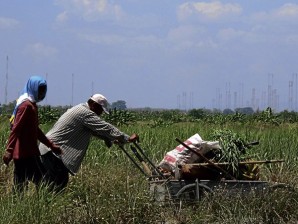PH strategy for Asean integration should target regions, sectors
MANILA, Philippines—The country should strive for growth in regions other than Metro Manila to effectively reduce poverty and maximize the fast-approaching Association of Southeast Asian Nations (Asean) Integration, an economist said Wednesday.
Dr. Alvin Ang, economics professor at the Ateneo de Manila University, said the growth of the Philippines for the past years had been concentrated in the National Capital Region, Southern Tagalog (Region IV), Central Luzon (Region III), Central Visayas (Region VII) and Davao Region (Region XI).
He said this is why for the last two decades, the poverty incidence per region in the country has barely decreased.
“The challenge really is to make this poverty go down faster,” he said during a forum on Asean Integration, held at the Ateneo Professional Schools.
He said it was important to connect the country’s goal for inclusive growth to the fast-approaching Asean Integration, which aims to consolidate the Asean member states into a single market of 600 million people.
Dr. Carolina Guina, who gave the synthesis for the morning session of the forum, said it is not enough for people to ask if the Philippines is ready for the Asean integration. Instead there should be more pragmatic and action-oriented questions.
“Can Asean economic integration benefit the poor? Can the AEC’s promise of economic growth also bring about inclusive growth?” she asked, echoing Ateneo Professional Schools Vice President Antonette Palma-Angeles’ questions during the opening remarks.
Guina pointed out that another way to look at inequality is that it undermines social cohesion.
“If people perceive unfairness or injustice this can result in social conflict,” she explained, adding that peace is important to have a prosperous economy.
In terms of sectors, Guina said that one challenge of sustaining growth is raising the productivity of majority of the country’s workers, particularly farmers, as well as small and medium enterprises (SMEs).
Ang said he has once worked with farmers who were achieving substantial agricultural productivity but still wanted to work in the city because there was “no cash” in the rural areas, “only palay.”
He said those areas should be targeted for inclusive growth, especially since a large number of Filipinos are still working in the agricultural sector.
“You want to pursue country side growth through the SMEs,” he said, although SMEs face a lot of challenges once the Asean integration goes on full blast.
Many SMEs complain of limited access to finance and technology and challenges in penetrating the export market.
According to the Department of Trade and Industry, 99.58 percent of the country’s businesses are micro, small and medium enterprises (MSMEs), which are responsible for 64.97 percent of jobs in the country.
